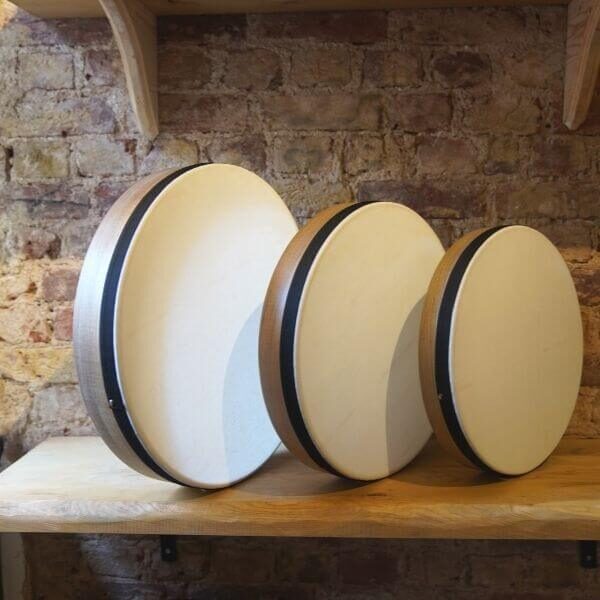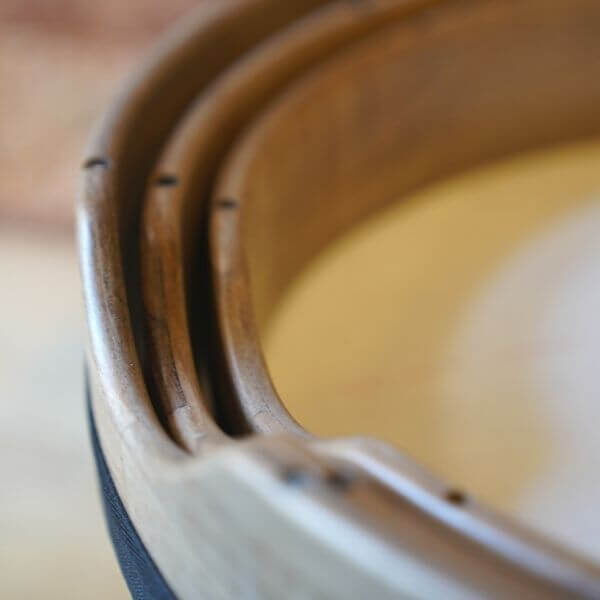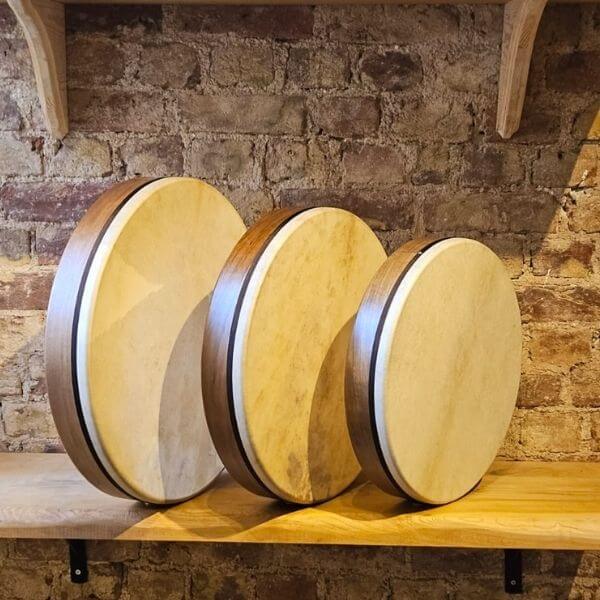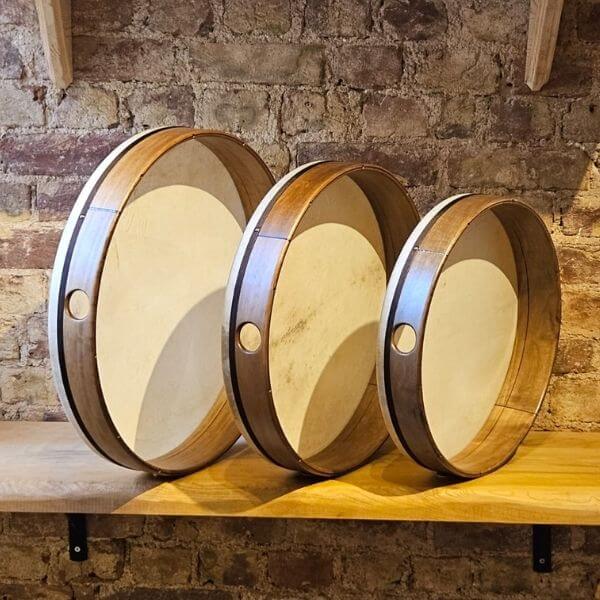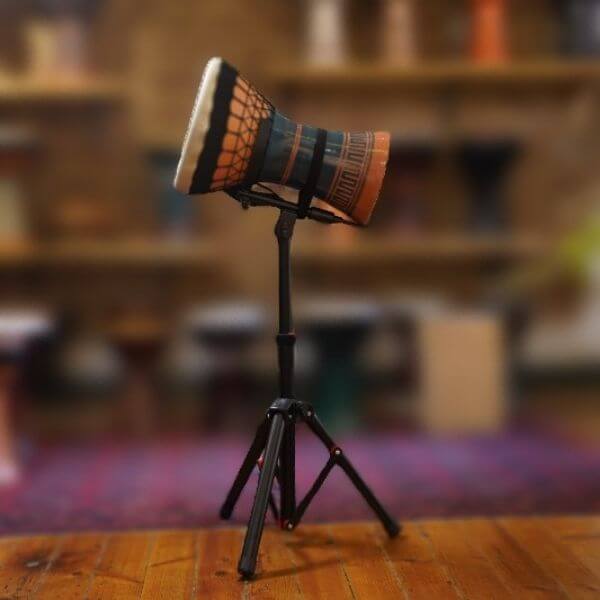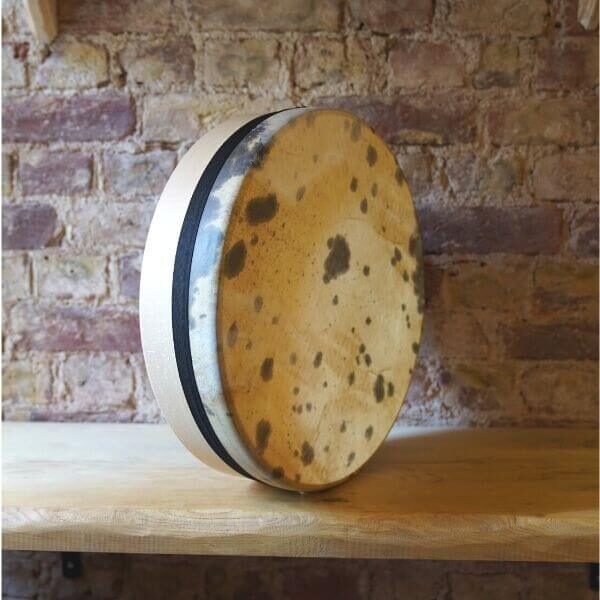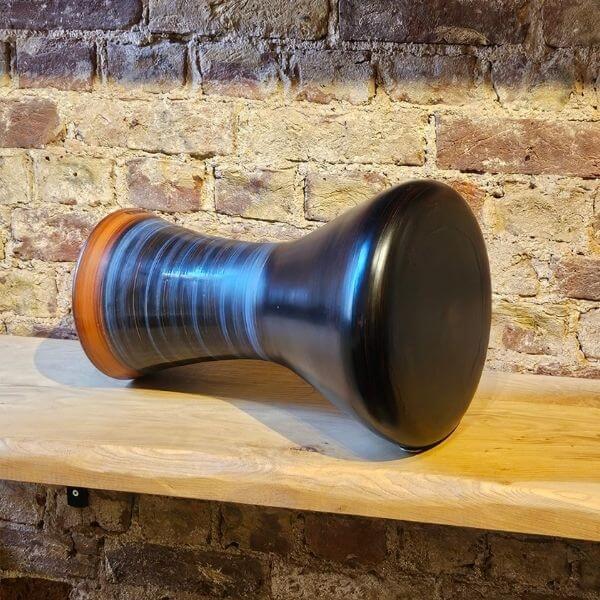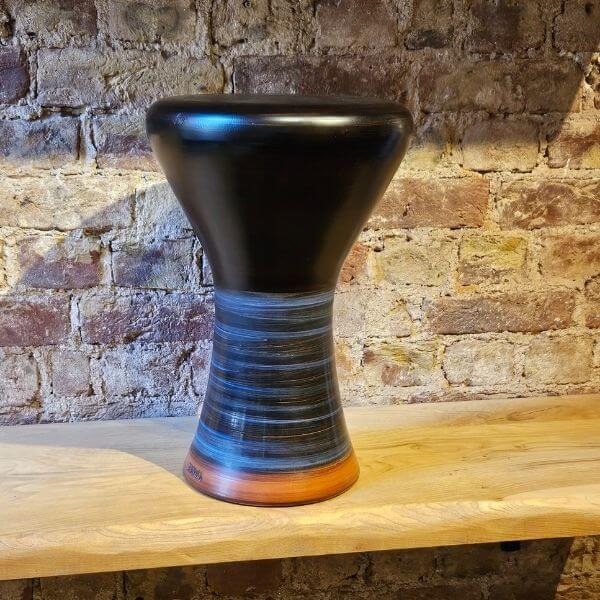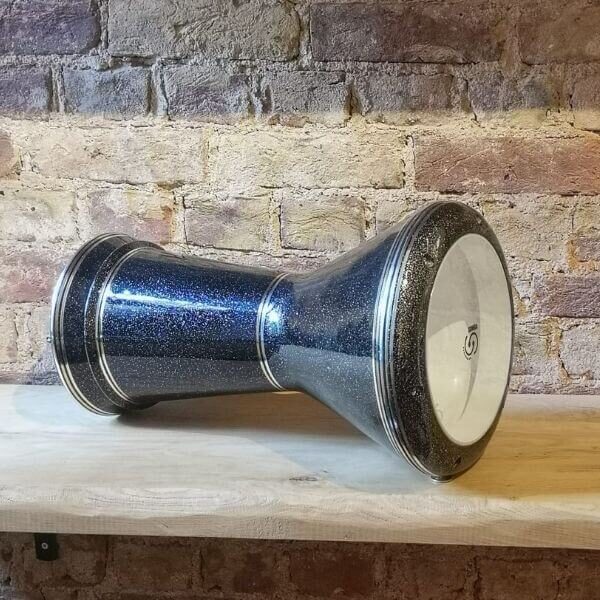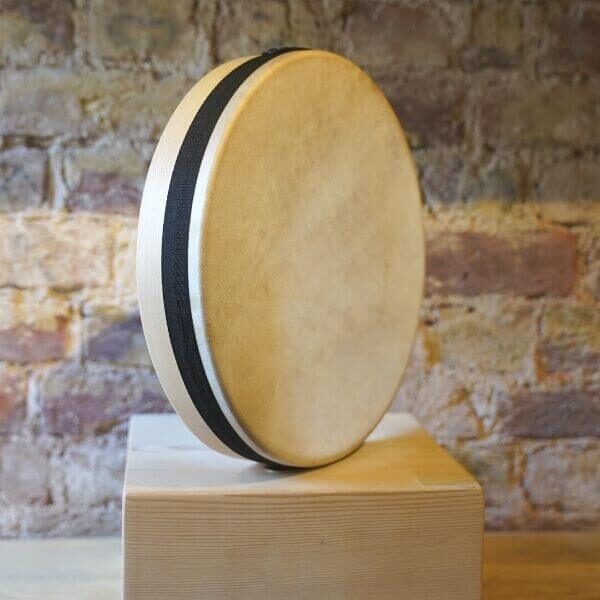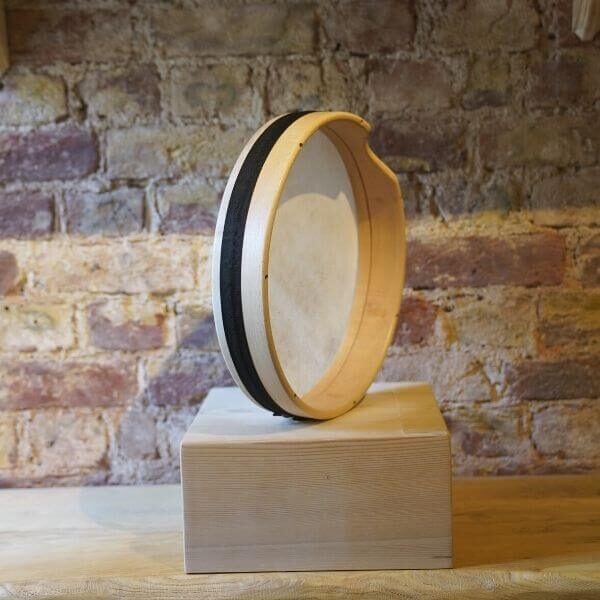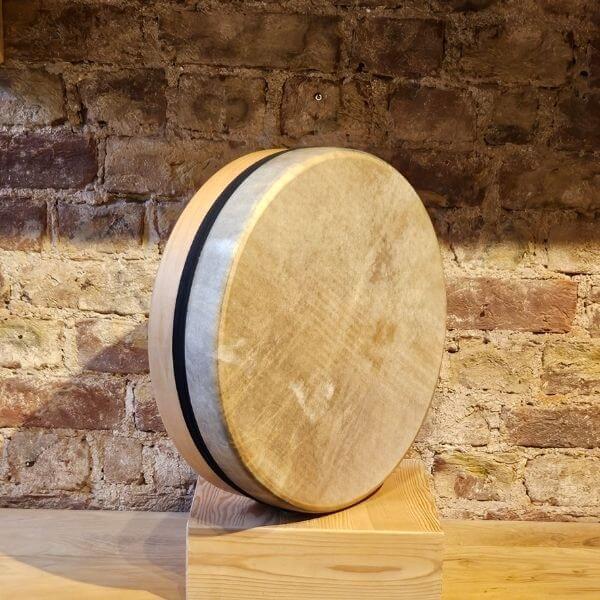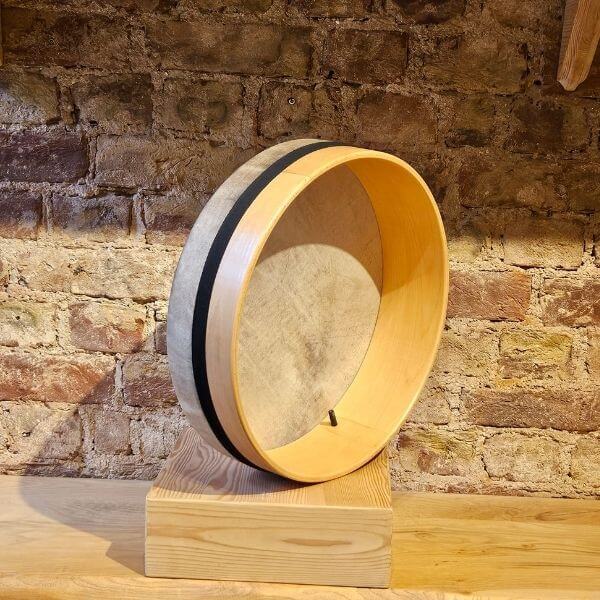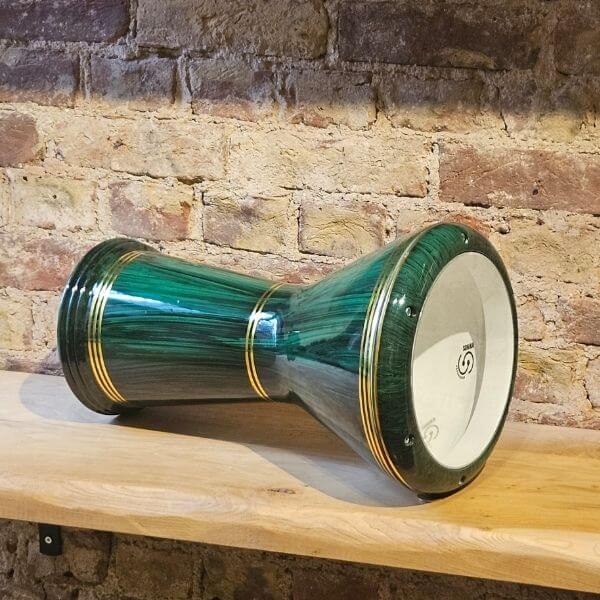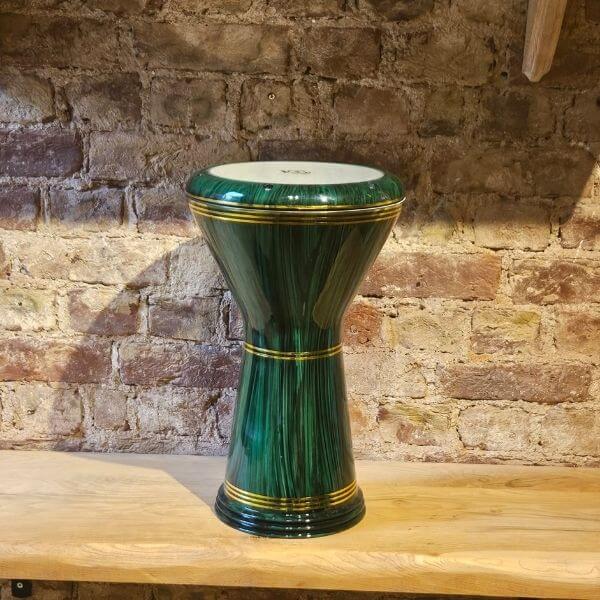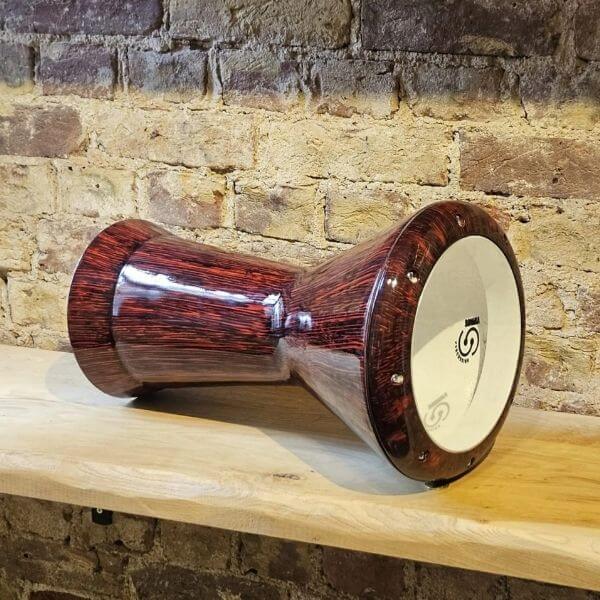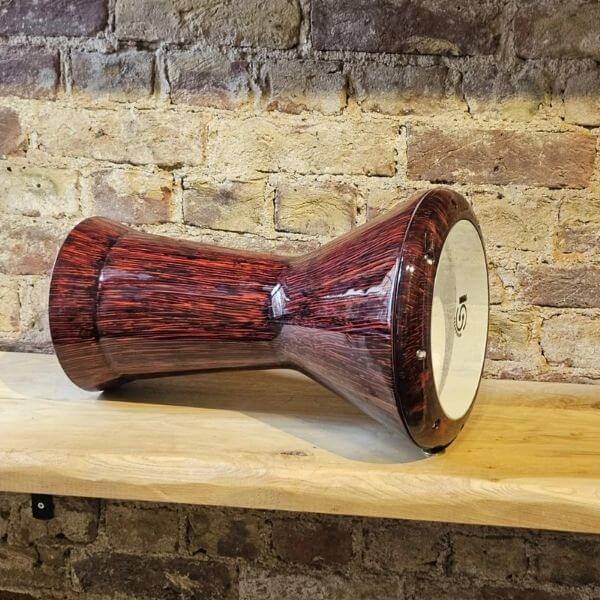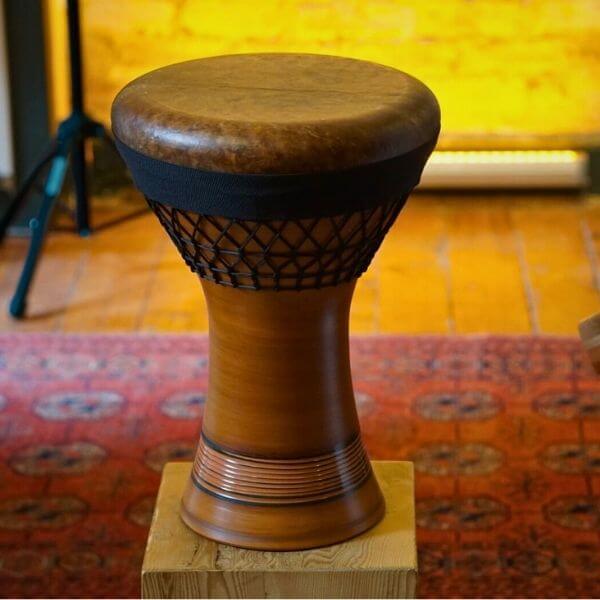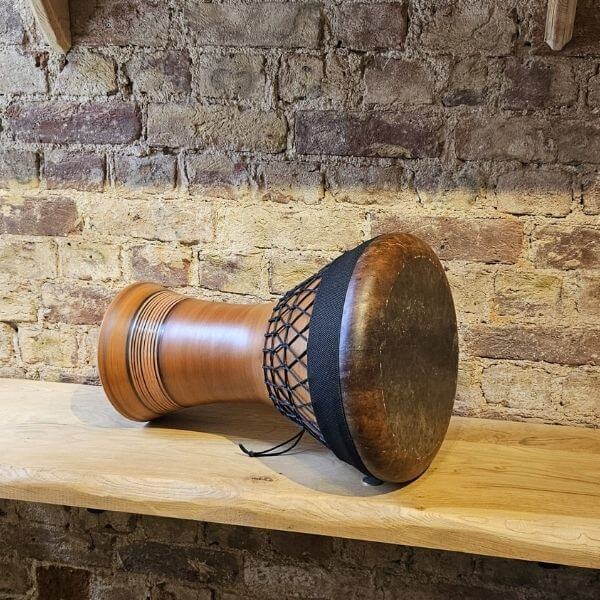Percussion instruments were the first musical devices created. They were formed in different shapes and structures depending on the cultural background that they were created. Starting from pre-historic era, some similar forms of today’s darbuka were used in Anatolia, Mesopotamia and Middle East. In time darbuka took different names in different geographies like dumbek, doumbek, sombaty, dohola, tombek, dumbelek, tabla. The first forms of this percussion instrument were made of clay. Now in addition to ancient clay darbuka, aluminum darbuka, wooden darbuka and copper darbuka are also widely used.
Clay darbuka (ceramic darbuka) has a deep natural sound as clay is used in the goblet shaped body and natural skin is used at the top of the instrument. Widely used skins in clay darbuka are fish, goat and cow. As the skin is natural, the skin head is sensitive to humidity. Clay darbuka players heat the skin head before the performance for tuning.
Fish skin topped clay darbuka has a high frequency sound with a great resonance. It is preferred by professional percussionists to perform on stage and for recording.
Goat skin is widely preferred in Turkey, particularly in mid bass and doholla darbukas. Goat skin is strong and has good endurance in humidity. Goat skin topped clay darbuka has a good variety of high frequency and bass sounds.
Cow skin is very similar to goat skin in character and is a thick skin. This brings further endurance to cow skin topped clay darbukas.
There are 3 commonly accepted sizes of clay darbuka: solo darbuka, mid bass darbuka and bass darbuka (dohollo).
Sonika Percussion aluminum darbuka has rounded edge and tuning screws hidden on the top of the head. There are 2 models in 23cm (9”) diameters having 5.5kg and 6.2kg weights. All market standard skin heads are compatible with 23cm (9”) diameter aluminum darbuka.
3 Pieces Set Of Frame Drums
- Diameter: 40,45,50 cm
- Depth: 6 cm
- Wood:Walnut wood
- Skin: Synthetic (fiber)
- It comes with;
- Soft case and Tuning Key



